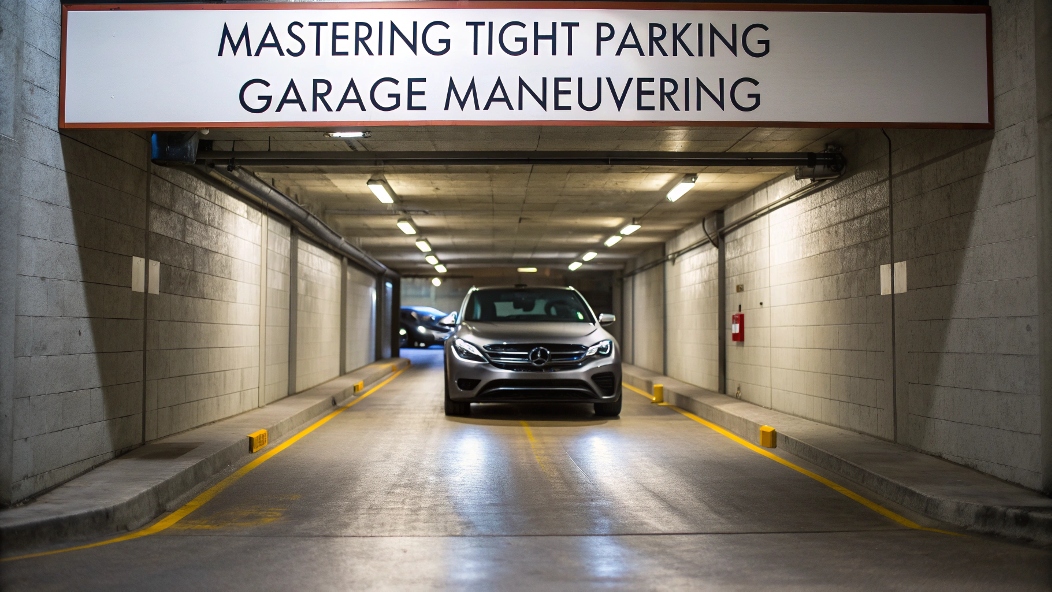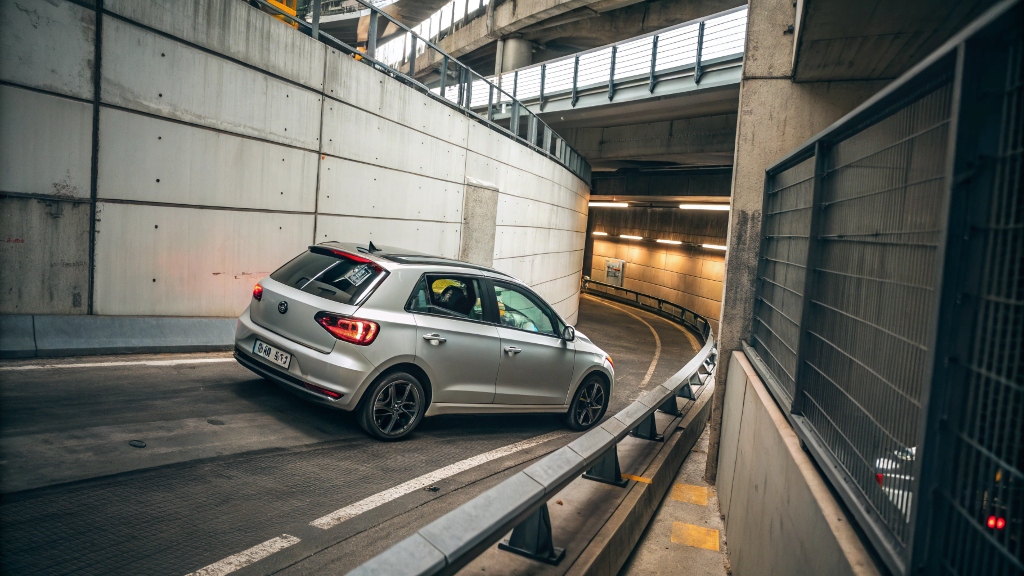Mastering Tight Parking Garage Maneuvering: Essential Tips to Stay Safe and Stress-Free

Parking garages aren’t what they used to be. As urban areas become denser and vehicles grow larger, maneuvering through tight garages has become a daily challenge for many drivers. From tight corners to narrow lanes and blind spots, garages are now hotspots for fender benders and scratched bumpers.
According to a study by the National Safety Council, 1 in 5 vehicle accidents happens in parking lots or garages. That’s alarming, considering most drivers drop their guard once they’re off the road. Yet, many forget that garages require just as much attention and skill as highways do.
My own experience backs this up. I once clipped a pillar while turning into a compact space. Even at a slow speed, the damage was frustrating—and avoidable. That’s when I learned to respect the hidden hazards of structured parking. It’s not just about avoiding damage; it’s about reducing risks and saving money.
If you ever find yourself in a legal pinch from a garage mishap, you can explore Lawyer Car Injury for reliable legal support. Now, let’s get into the essential knowledge and tools that will make tight parking garage maneuvering much easier for you.
Understanding the Hidden Risks of Tight Parking Garages
Parking garages may feel safer than busy streets, but they come with their own set of hazards. These include poor lighting, low ceilings, tight turning radii, and pedestrian movement. Add in distracted driving, and the danger multiplies.
One key issue is visibility. Most garages have blind spots caused by columns or tight corners. According to AAA, 14% of all parking lot accidents are due to limited visibility. Also, many drivers don’t realize that compact spots are only about 7.5 feet wide, compared to the average SUV width of 6.5 to 7 feet.
Another often overlooked problem is pedestrian movement. Garages are full of foot traffic—families, kids, people texting. Yet many garages lack clear walkways. When backing up, it’s easy to miss someone behind your vehicle.
This brings us to another crucial point. There are proven ways to reduce road accidents, and practicing careful garage driving is one of them. Many accidents are preventable if drivers simply slow down, stay alert, and follow key safety tips.
Lastly, garages are prone to theft and property damage. In low-visibility corners or dark basement levels, these issues go unnoticed until it’s too late. Recognizing these risks is the first step to smarter maneuvering.
Tip #1: Drive Slowly—Every Second Counts
Speed is your worst enemy in a parking garage. The slower you drive, the more control you maintain over your vehicle. Experts recommend driving no faster than 5 mph in tight garages. At this pace, you can react quickly to pedestrians or other cars pulling out.
Here’s why slowing down works:
- It gives you more time to judge tight spaces.
- It minimizes the impact in case of a collision.
- It reduces stress and the likelihood of overcorrection.
In my own case, I learned this after an expensive insurance claim. I had rushed into a turn, trying to catch a spot. I misjudged the clearance and scraped the passenger side against a concrete beam. Had I been driving at 3 mph instead of 10, I could have avoided it entirely.
Additionally, if you’re driving a large vehicle like a truck or SUV, slow speeds are non-negotiable. These vehicles have wider turns and longer bodies. You need all the time you can get to maneuver carefully.
Pro Tip: If someone behind you is tailgating, pull over and let them pass. Don’t feel pressured to speed up—it’s not worth the risk.
Tip #2: Use Mirrors and Cameras—But Don’t Rely on Them Alone
Rear-view and side mirrors are your primary tools. Parking sensors and cameras help too, especially in tight conditions. However, they should assist your instincts, not replace them.
Here’s a practical approach:
- Use mirrors to check the clearance on both sides.
- Use cameras for rear and blind-spot visibility.
- Turn your head to double-check if you’re unsure.
According to Consumer Reports, over 90% of new cars now have backup cameras, but that doesn’t mean they catch everything. Shadows, small poles, or low curbs can still escape detection. It’s always better to double-check in person.
In tight garages, sensors can sometimes beep unnecessarily due to nearby walls. Don’t panic. Be patient and use slow, small adjustments to move forward or backward.
Quick Hack: Tilt your side mirrors downward when parking. This helps you see the lines better and avoid scraping the curb.
Tip #3: Practice Precision Turns Before You Need Them
One major issue in garages is misjudging your turn radius. This happens more often in spiral ramps or tight entry lanes. Practicing turns in an open lot can make a huge difference.
Here’s what to practice:
- Three-point turns in compact spaces
- Reversing in a straight line
- Angle parking (45° or 60°)
- Turning within a tight circle
Even experienced drivers can benefit from this. It builds muscle memory and confidence.
Why it matters:
Turning too early or too late can cause your rear wheels to mount the curb or your front end to hit a pillar. This is especially true for long vehicles like minivans.
One of my worst experiences was trying to exit a curved ramp in a multistory garage. I turned too sharply, and my bumper kissed the wall. Lesson learned—practice your turns before entering battle zones like that.
Pro Tip: When turning, aim your front wheel past the curve before cutting sharply. This creates enough clearance for the back of your car.
Tip #4: Choose the Right Spot Strategically
Not all parking spots are created equal. Choosing the wrong one can lead to stress, delays, or worse—damage. Go for spots that give you extra space to maneuver.
Here’s how to choose smartly:
- Park near exits for fewer passing cars
- Avoid spots near columns or walls
- Prefer pull-through spaces if available
- Park beside smaller cars to avoid door dings
If your garage has multiple levels, go up a floor or two. Higher levels are usually less crowded. It might take a few more seconds, but it reduces your risk of bumping into someone or something.
A study by the Insurance Institute for Highway Safety (IIHS) found that 69% of low-speed crashes occur during parking. Most happen while backing out of tight spots.
Final Tip: Park farther from entrances. These spots are usually wider and safer—and walking a few extra steps is a small price to pay.
Tip #5: Stay Calm and Patient in All Situations
Stress is a major factor in poor parking decisions. Whether you’re late or feeling pressured by other drivers, losing your cool can lead to costly mistakes.
Here’s how to stay calm:
- Take deep breaths before maneuvering
- Don’t rush when reversing or turning
- Use your hazards if you need more time
- Ignore impatient honks—focus on your safety
Garages are full of distractions—flashing lights, alarms, and pedestrian movement. The only way to stay safe is to stay focused and composed.
In one incident, I saw a driver get flustered by a honking tailgater and rush into a spot. He ended up misjudging and dented the vehicle beside him. The aftermath? An insurance headache that could have been avoided.
Remember: Staying calm is a skill. The more composed you are, the better your judgment and reactions will be.
Read More Also: Innovations in Materials and Design for Modern Boats
Conclusion
Tight parking garages are a challenge—but they don’t have to be a nightmare. By driving slowly, using your tools wisely, and practicing your turns, you can reduce risk and stay damage-free.
Don’t forget, garages are still part of the road. Respect the rules, stay alert, and give yourself extra time. You have the power to make tight parking easier and safer. Practice the tips above, and you’ll be a master in no time.
Have a parking garage story to share? Leave a comment below or share this article with someone who struggles with tight spots.
Discover More: The best applications for Android tablets to explore the world
FAQs
What is the best way to park in a tight garage?
Drive slowly, adjust mirrors, and use your backup camera. Choose open spots and avoid tight corners when possible.
How can I avoid hitting walls or columns?
Take wider turns and keep your mirrors aligned with the lane. Always double-check blind spots by turning your head.
Should I back into tight parking spaces?
Yes, backing in gives you a better view when exiting. Just ensure there’s enough space and no pedestrians behind you.
Are parking garages dangerous?
They can be. Accidents, theft, and pedestrian hazards are common. Stay alert and park in well-lit areas.

